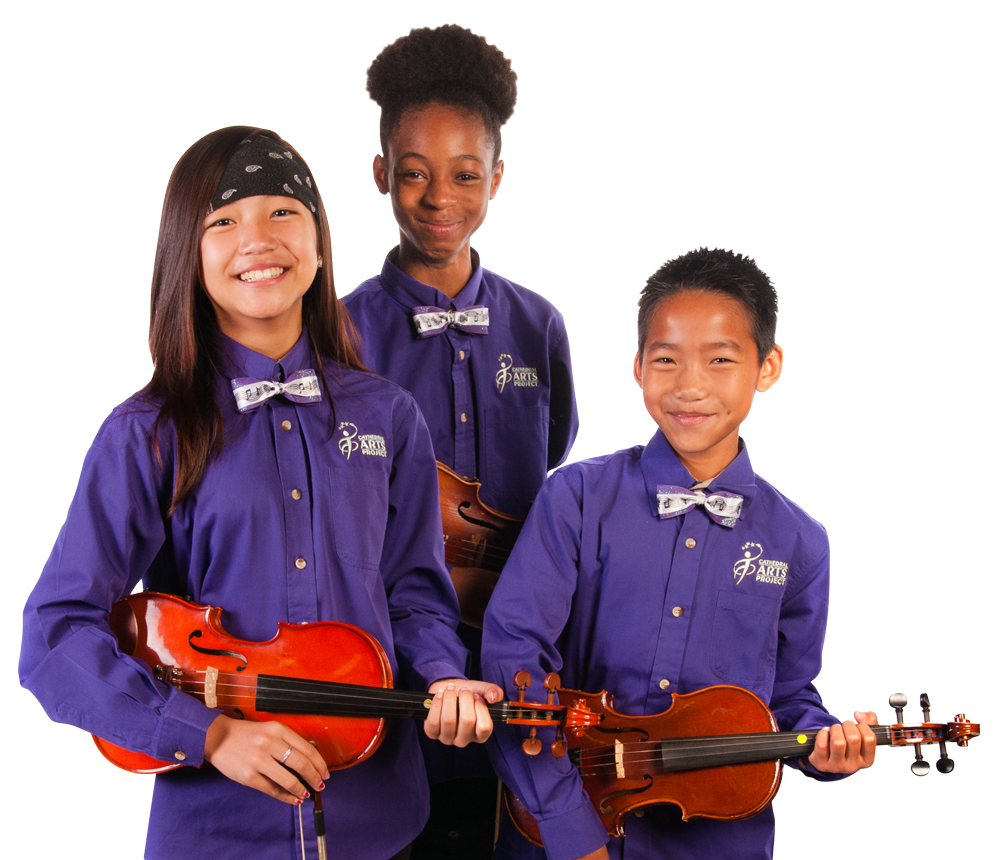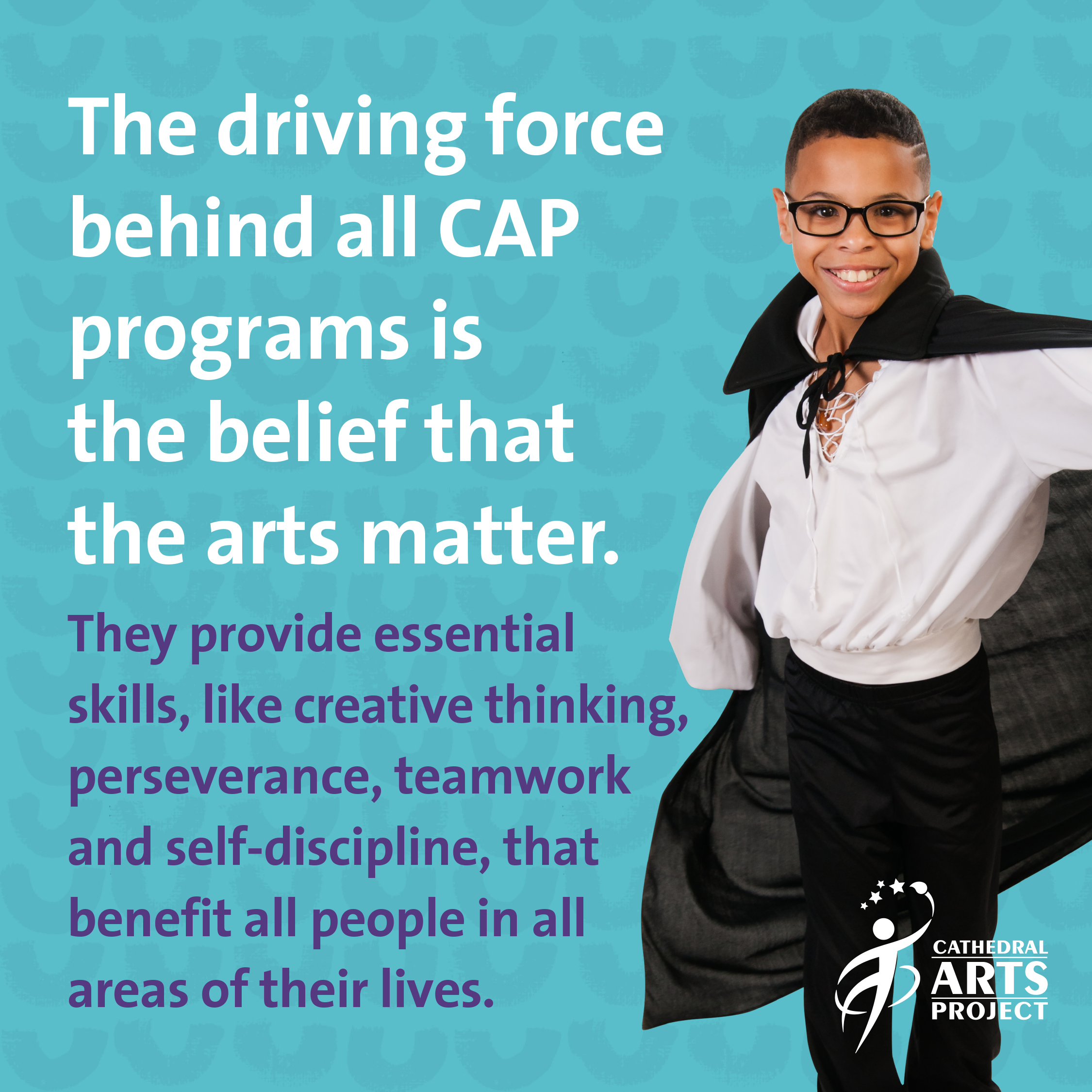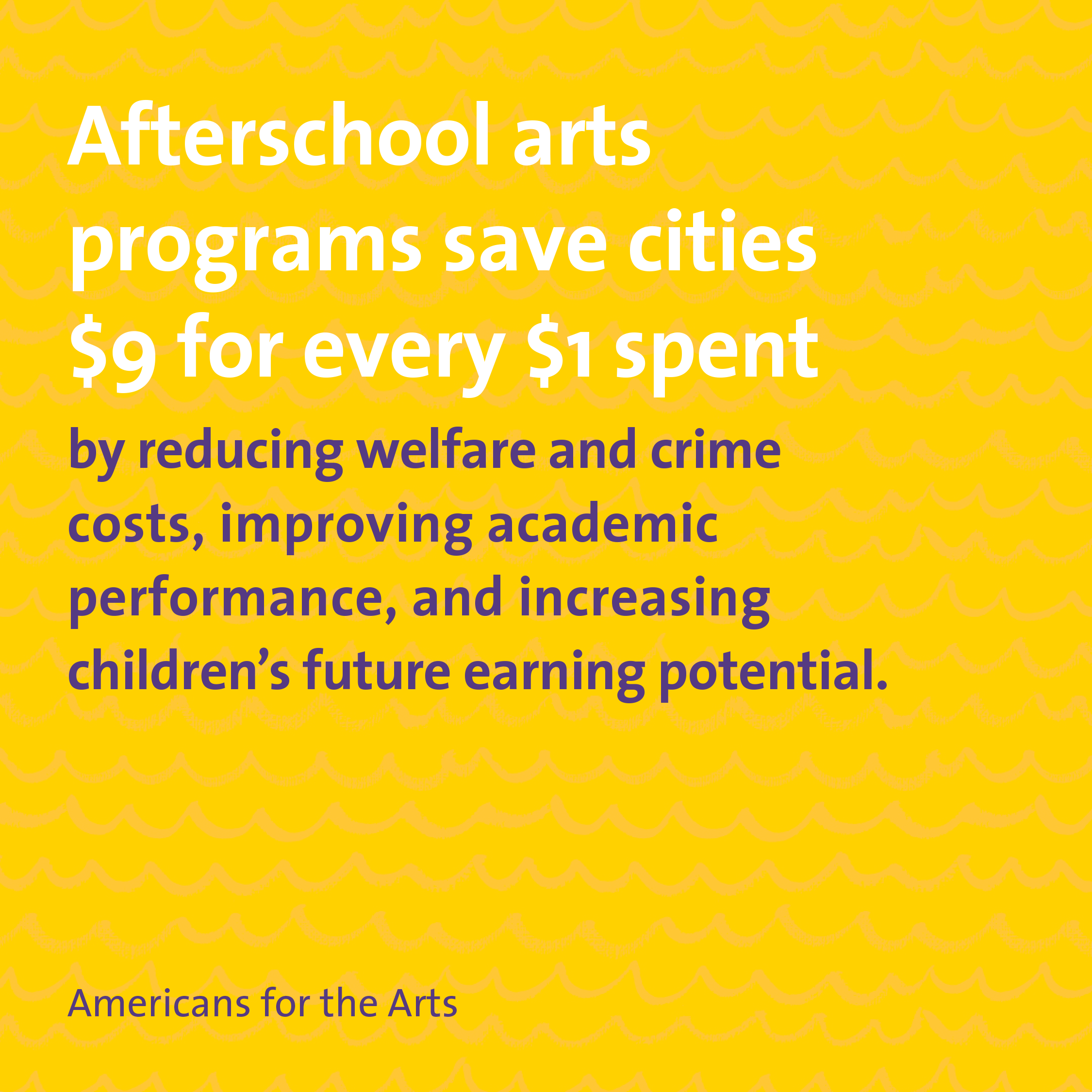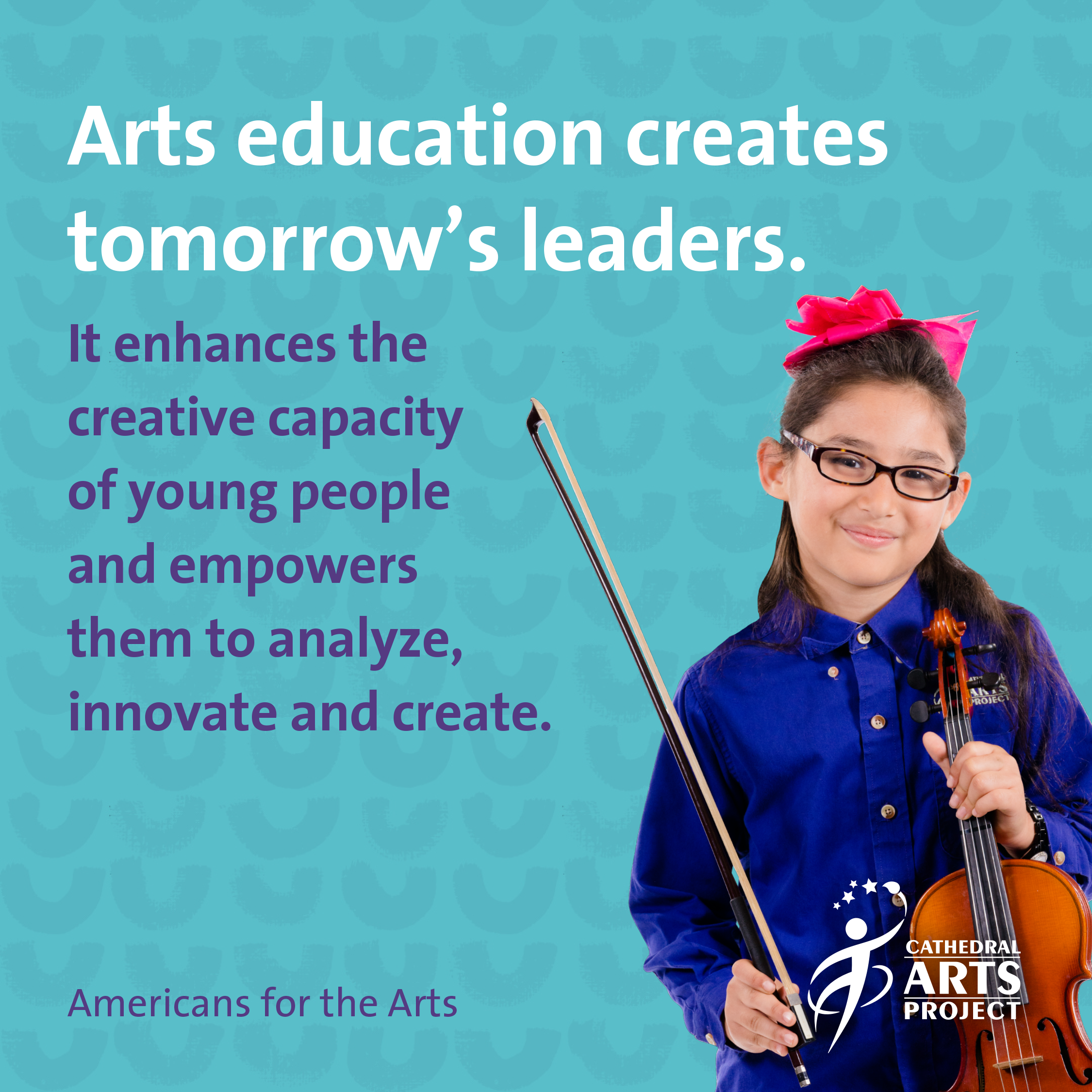WHY THE ARTS?
Every child has a creative spirit. For some, it comes alive through the visual arts: turning blank pages and digital canvases into expressions of hope. For others, it breathes through their bodies – transforming notes, choreography, and words into personal statements of joy.
Children develop the technical skills to prepare for these moments through instruction in the arts. Along the way, the arts develop their unique strengths – like self-confidence, creative thinking, self-respect, empathy and perseverance.
FAST FACTS
So many reasons to support arts education.
RESULTS
A strong and lasting impact.
CAP has undergone several independent research studies, the results of which consistently show significant differences between CAP students and their non-CAP peers.

On average, CAP students:
Evaluation tools include pre- and post-program assessment surveys, artist journals, classroom observation, student performance evaluation, mid-term evaluations of student grade averages and attendance records. Twelve different metrics—seven behavioral and five discipline-specific—are monitored.
Percentage of students who saw improvement in CAP classes:
87%
Demonstrate skills needed to produce quality arts or performance
82%
Actively participate in class sessions
81%
82%
Communicate effectively with peers
97%
Improved in at least one metric
RESEARCH SUPPORTING
Arts Education
Research from organizations like the Arts Education Partnership, National Endowment for the Arts and National Guild for Community Arts Education shows clear links between arts involvement and positive outcomes in academics, creative and critical thinking, personal behavior, and social and civic participation.
These benefits reinforce the essential value of the arts to enrich not only individual children and young adults, but also their communities.

Theatre Counts: How Theatre Education Transforms Students’ Lives
People have long recognized the benefits of theatre education for academic outcomes in both theatre and other subjects, but did you know about its benefits for learners’ identity development, peer relations and self-awareness? This special report from AEP explores the impacts of theatre education on students and their development, as well as outcomes for educators as they strive to create empowering learning environments.

A Population-Level Analysis of Associations Between School Music Participation and Academic Achievement
This large-scale study identified evidence of positive relationships between school music participation and high school exam scores in English, mathematics, and science using population-level educational records for over 110,000 students in British Columbia, Canada. Participation in school music (especially instrumental music) was related to higher exam scores, and students with higher levels of school music engagement had higher exam scores.

Investigating Causal Effects of Arts Education Experiences
The report encourages policymakers to be mindful and considerate of these multifaceted educational benefits when assessing the opportunity costs that come with decisions pertaining to the provision of the arts in schools.






